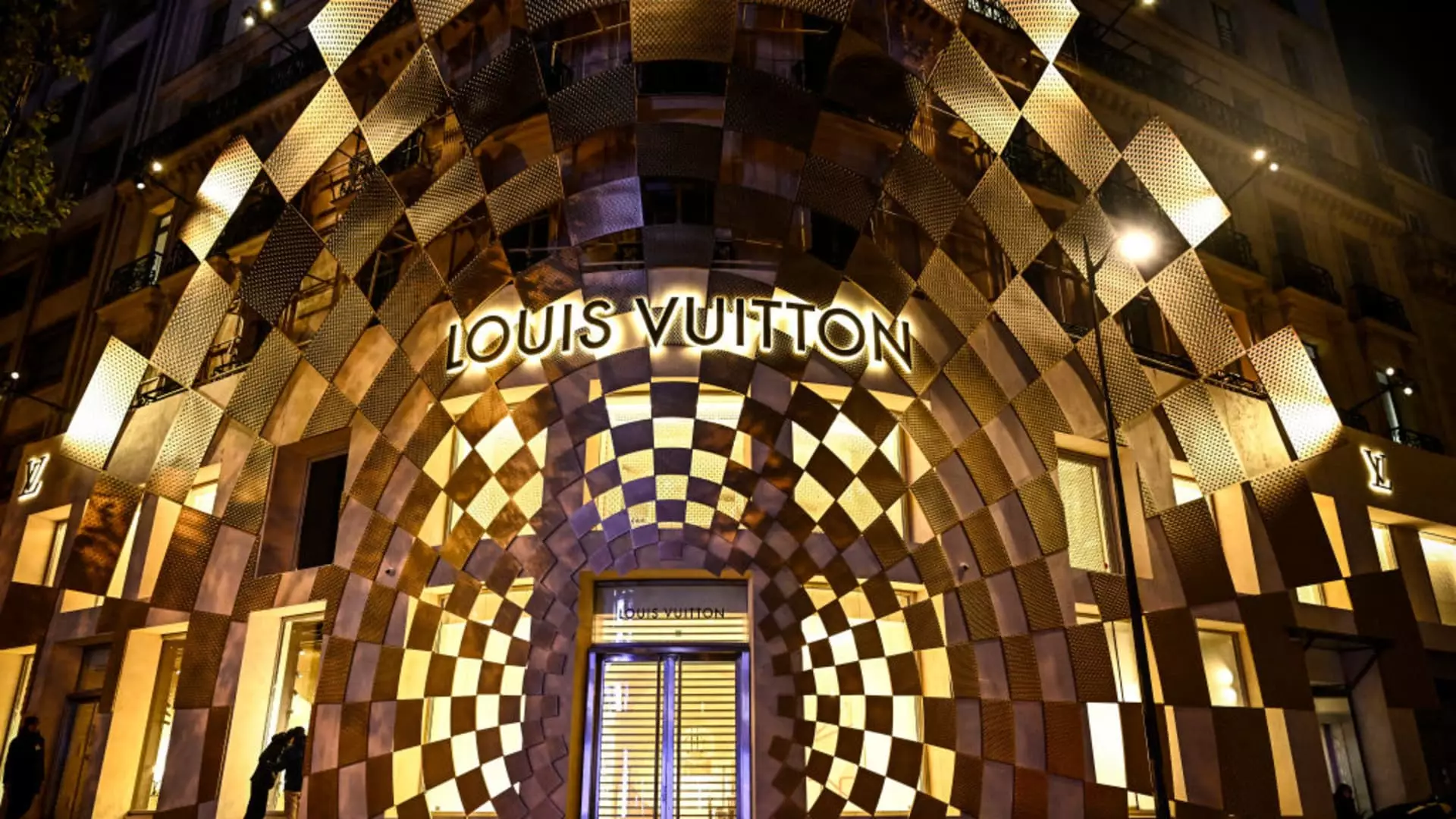In the ever-evolving landscape of luxury goods, LVMH Moët Hennessy Louis Vuitton, the titanic conglomerate renowned for its prestigious brands such as Louis Vuitton, Moët & Chandon, and Hennessy, has recently published its annual financial results. While the figures may initially appear promising, deeper analysis reveals an intricate web of challenges and missed expectations, leading investors to reassess the state of the luxury market.
LVMH reported revenues of €84.68 billion ($88.27 billion) for the year 2024, slightly above the anticipated €84.38 billion predicted by analysts at LSEG. However, the organic growth rate of merely 1% compared to the previous year raises eyebrows. Investors had been cautiously optimistic following Richemont’s robust quarterly sales performance. In contrast, LVMH’s results have generated skepticism about the luxury sector’s recovery, leading to a notable 6.42% drop in its stock by mid-morning London time. Fellow luxury stalwarts, Kering and Christian Dior, also witnessed significant declines of 6.65% and 5.71%, respectively, illustrating a broader negative sentiment pervading the industry.
The luxury market, which had shown signs of resilience post-pandemic, seems to be grappling with renewed pressures, primarily from declining sales in critical segments. Although LVMH attributed revenue growth to its selective retailing division—including Sephora—and its perfume and cosmetics line, the faltering performance in its fashion, leather goods, and wines and spirits segments is alarming. The discrepancy between thriving sales in specific regions, like the U.S. and Europe, contrasted with lackluster performance in others, particularly China, underlines the uneven recovery trajectory luxury brands are experiencing.
Market Sentiment and Brand Benchmarking
Quilter Cheviot’s consumer discretionary analyst Mamta Valechha commented on this situation, noting that while LVMH’s sequential improvement was evident, it paled compared to the upbeat performances reported by competitors like Richemont and Burberry. This context is critical. Credibility and expectations within the luxury sector are tightly interwoven, and LVMH’s results did little to bolster investor confidence after peers had already set high benchmarks. The timing and context of financial disclosures have rarely been more crucial, as the sentiment can swiftly shift when initial positive momentum is not matched in subsequent reports.
Despite falling stock prices in the wake of LVMH’s results, it’s significant to note that shares remain up around 14% year-to-date. Earlier in the month, the conglomerate had briefly reclaimed its title as Europe’s most valuable company from pharmaceutical giant Novo Nordisk. Still, the stock’s recent dip suggests that investors are apprehensive about LVMH’s ability to navigate the ongoing complexities of the luxury market, particularly given the global economic challenges and shifts in consumer behavior.
LVMH’s latest earnings report serves as a critical barometer for the broader luxury sector, reflecting both the potential and pitfalls currently shaping the market. While the company showcased certain areas of growth, this was insufficient to soothe investor concerns regarding its sluggish segments. As the luxury goods industry continues to adapt in a rapidly changing economic environment, stakeholders will be keenly watching for any further developments that could indicate a definitive path to recovery.

